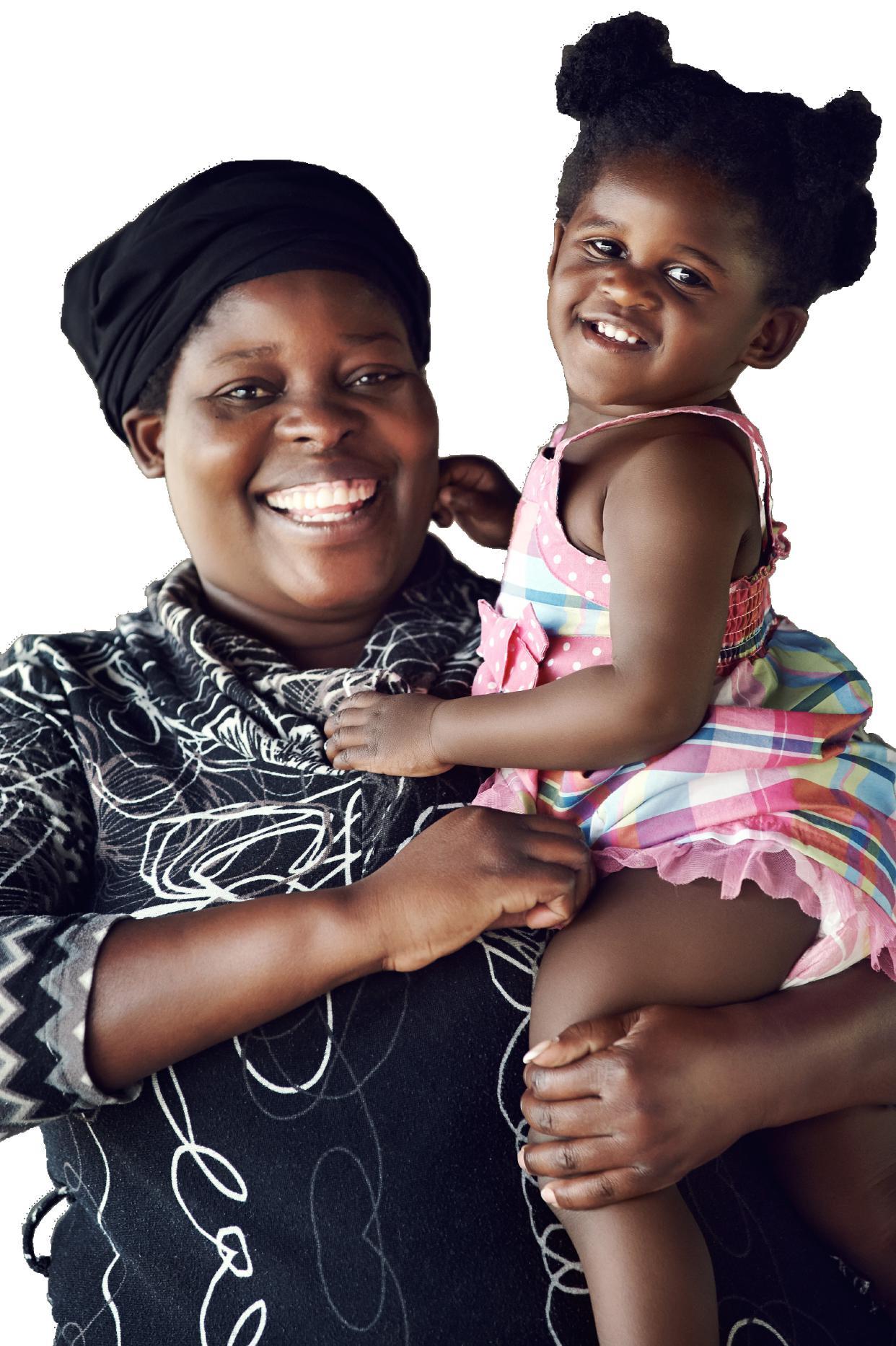
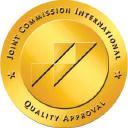



We have come to the end of our financial year 2021/22, and August 2022 marked the first month of our new year. The year 2021was for us and many organizations a transition year from the COVID19 pandemic era to a post – pandemic environment fraught with the many challeng es that came with making that transition.
I am pleased to report that we had a very successful year across all performance indicators. Clinical outcomes remain our most critical indicators and on this I am glad to confirm that we saw improvement at every level. Through a consistent standardization of clinical practice supported by a number of improvement initiatives we reduced the hospital’s average annual raw mortality rate from 0.36% to 0.24% against a benchmark of about 1%. Our inpatient re-admission rate remained low at 3.1% against a benchmark of 4.46% while our outpa tient re-attendance rate also remained low at 0.1% against a bench mark of 1%. For all these indicators, the lower the number and as close to zero as possible the better. The three indicators mean that we try our level best and within the ability and limitations of modern medi cine to get it right the first time for most patients that we attend to and discharge them home alive. More details on these and other quality indicators may be found on our website www.gerties.org/quality.
One of the major contributors to our continuous improvement in clinical outcomes is effective partnership and cooperation between our clinicians and parents of the children that we care for. We believe that parents, especially mothers, have the best information and instinct about their children’s health and, therefore, their input and partnership in actual care delivery is critical in optimizing outcomes. We sincere ly thank parents for being true partners with our clinicians. We promise to be good partners and to treat you as partners.
Looking ahead, we are optimistic that we will build on the successes of the previous year to achieve even better results for the children of Eastern Africa and their families.
This year we celebrate our 75th anniversary, a legacy of dedicated and trusted healthcare delivery to children and adolescents. A number of activities have been lined up to both celebrate this milestone and as well challenge us to progress this legacy for many generations ahead.
As part of extending this legacy of high quality paediatric care to as many Kenya children as possible, I am pleased to update that we have opened a new facility at the lake side city of Kisumu to provide care to children and adolescents in Kisumu and the larger Western Kenya region. We hope that this is the start to our journey to improve access to high quality paediatric care to families in as many counties in Kenya as possible.
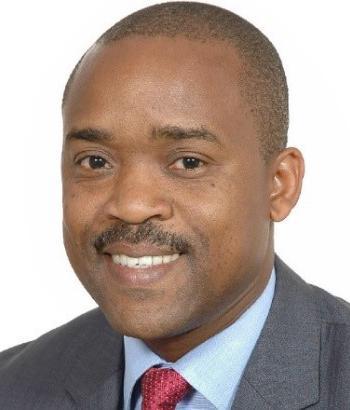


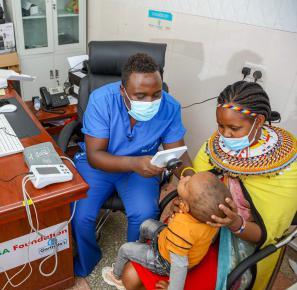
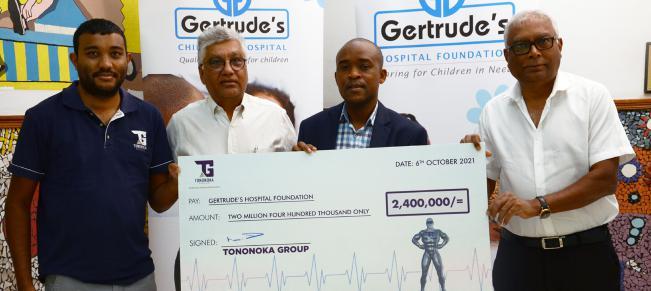




We, at Gertrude’s Children’s Hospital, are delighted that our hospital is celebrating 75 years. Opening its doors initially as a children’s home in 1944, the hospital has been evolving and expanding since 1947 to become a Level 5 Healthcare Facility, a Tertiary Referral and Teaching Children’s Hospital.
From hearts to hearing, from sleep to skin, bones to breathing difficulties and more, Gertrude’s sees more than 300,000 outpatients every year.
Gertrude’s Children’s Hospital is a not- for-profit Children’s Hospital, and the most recognized paediatric hospital in Eastern and Central Africa.
We have expert teams, equipment and facilities, available 24 hours a day. Children come to us from all over Kenya and beyond, utilising more than 20 aspects of paediatric specialisation, as well as a teens’ clinic providing comprehensive healthcare to teenagers and young adults.
Gertrude’s Children’s Hospital uses advanced technology and has state-of-the-art facilities acquired over the years, enabling the hospital to provide a full range of healthcare services including preventive care, accident and emergency, outpatient care, inpatient medical and surgical care, and rehabilitation services.
Gertrude’s has proved that it is at par with innovation and technological advancements. In 2021, the Gertrude’s Hospital Foundation and its partners launched a telemedicine program which helps reduce the number of referrals of sick children and optimizes the capacity and reach of healthcare delivery systems by allowing level IV and V hospitals have access to specialists.
At Gertrude’s, we invest heavily in quality and safety strategies that ensure constant improvement of all our services, in line with international standards.

Gertrude’s Children’s Hospital is there for you; there to offer your child the highest quality in healthcare
services, but we’re not stopping there. As we celebrate our 75th anniversary, we have exciting plans to continue growing Gertrude’s over the next 75 years, so we can care for even more children and young people who need our specialist care...now and in the future.

Gertrude’s Children’s Hospital Board of Trustees, administration and the entire management held a one-day strategy meeting to review the performance of the year ended as well as lay down the strategy for the financial year 2022/2023.
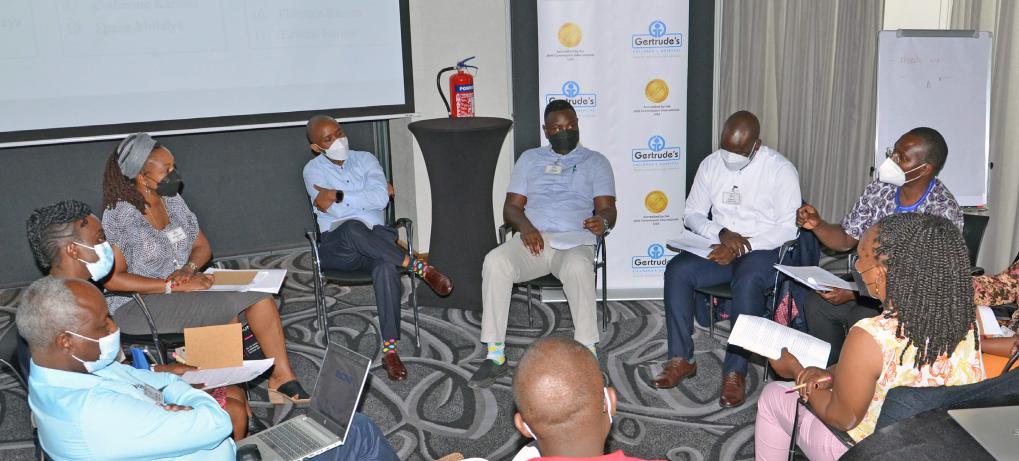
The meeting kicked off with opening remarks from the Chairman Board of Trustees, Mr Alec Davis. He then opened the floor for presentations by major departmental heads which included the outpatient department, the inpatient department, the clinical services, human resource department, finance, the information services, quality and patient safety, as well as shared services.
There were also presentations and keynote speeches from Dr Gail Knight, Senior Vice President, Chief Medical Officer, Rady Children’s Hospital, San Diego and Dr Ramesh Kancharla, CEO Rainbow Children’s
Hospital.
Key notable achievements for the financial year ended 2020/21 included inception and opening of the molecular laboratory, outpatient expansion with the opening of Westlands Clinic, as well as relocation of the Kitengela Clinic. Other major achievements announced during the meeting included JCI re-accreditation, 100% improvement in reporting, reduction in mortality, as well as automation to support Quality and Patient Safety and the new Hospital Management Information System status report.
Nothing had prepared Ashley Maria for the shock of discovering that there was something wrong with her unborn baby’s heart. She was seven months pregnant when her doctor diagnosed her daughter Anne Staicy with Tetralogy of Fallot (TOF), a combi nation of four related heart defects that commonly occur together.
As she narrates, the news of her daughter’s condi tion was followed by another devastating one, her daughter needed to undergo a surgery after birth to increase her chances of survival. The remaining two months of Ashley’s pregnancy were clouded by fear and anxiety as she waited for the birth of her baby. However, when the baby came, the doctor recommended that the surgery be done when she was at least six months old.
“The baby needed to put on weight before they could perform the surgery,” she explains. At eight weeks old, when baby Anne Stacey was 2.7 kilogrammes, she went in for her first open heart surgery. “Things didn’t go as planned as we would spend millions of shillings treating our daughter.
There were multiple times the doctors prepared my husband and I for the worst. Anne was in the hospital’s Neonatal Intensive Care Unit (NICU) for two months after the surgery after which she was discharged and put under the care of a nurse and fed with the help of a tube,” Ashley narrates. In the first two years of her life, Ashley always feared for how her daughter’s life would turn out. However, today, Anne is a thriving six-year-old and in kinder garten. She will be getting her first pulmonary valve transplant soon. “My daughter looks healthy and full of energy. You can hardly tell she has gone through such a difficult childhood, unless you see her scar or feeding tube,” Ashley says.
Sam Muoki was also born with an atrial septal defect (ASD), a congenital heart disease that refers to being born with a hole in the heart located between the upper chambers (atria). His father, John Mwangangi, says they noticed this when Sam was nine months old. “He had an abnormal growth where he couldn’t gain weight like a normal child.

At first, we thought it was usual, but his heartbeat was too loud that we could hear it, he had difficulty breathing and would get tired when feeding. We made several visits to the clinic to establish what was wrong with him, only to be told that he had a hole in the heart,” says Mwangangi. Mwangangi adds that the most insurmountable challenge was to raise funds to cater for the corrective surgery, to the tune of Sh1 million.
Ann and Sam are just a small bit of the number of children who are diagnosed with the different types of Congenital Heart Disease (CHD) every year. The World Health Organisation (WHO) reports that 5,000 children require CHD treatment in Kenya each year. A 2019 report by Frontiers in Paediat rics, an official journal of the European Academy of Paediatrics (EAP), indicated that on an annual basis, Kenya performs between 120 and 150 congenital open-heart operations, with a similar number of congenital catheters interventions. The report also pointed out that approximately 50 to 100 additional patients receive treatment outside Kenya, most of whom are self-funded, but this does not include those with rheumatic heart disease, which accounts for a significant percentage in Kenya and Sub-Saharan Africa. The vast majority of these children receive suboptimal or no care at all.
Whilst the load of CHD is immense in Kenya, Gertrude’s Children’s Hospital recently initiated a free heart screening exercise through its foundation. 79 children were found to require surgery, 25 of whom have been operated on so far while 28 children are on follow up and on medica tion. Dr Carol Waweru, Gertrude’s Hospital Founda tion manager, says that the free heart screening campaign was inspired by the fact that most children with CHD are not correctly diagnosed. As a result, a majority of them end up leading a poor quality of life. They were also inspired by the increased cost of care delivery due to repeat hospitalizations.
“The majority of the children that came when we were doing the heart screening programme already knew that they had a heart condition and wanted free heart surgery. One of the main contributors to poor access to cardiac surgery and associated care for children with CHD is inadequate diagnosis as a result of inadequate skills and technology to support the same across the country. Gertrude’s Children’s Hospital conducts periodic screening exercises to help diagnose these children in the local community and link them to definitive treatment,” says Dr Waweru.
Dr Mark Awori, a paediatric heart surgeon at Gertrude’s Children’s Hospital, says that cardiolo gists get frustrated in Kenya, because of lack of facilities offering open-heart surgeries. “That is the problem we are trying to address with Gertrude’s

Children’s Hospital,” he states.
Dr Awori says that while undertaking the screening, the most common cases reported were, such as that of Sam - a hole in the heart. Gertrude’s Children’s Hospital is investing to devel op capacity to treat complicated cases. “A third of the holes in the heart cases are complex. Locally, we perform surgery on two-thirds of the cases. We want to scale up and do more complex surgeries,” he says.
“The most complex case in CHD is the one on single ventricles where half of the heart is not formed all together and one has only two valves. You can save these babies with early surgeries. They need very many surgeries even when they grow up. The results are worth it by the time they turn 10 to 15 years,” he adds.
Dr Awori says that developing countries face the challenge of funding congenital heart surgeries. “We are looking at building the confidence of Kenyans with our facilities. The public will also help us by talking positively about our services as a country. Governments, corporations and individuals can help us reach this milestone,” he says.
Nonetheless, Dr Martin Mbiata, a Resident Cardiol ogist at Gertrude’s Children’s Hospital, notes that the intervention by the government bodies, such as the National Health Insurance Fund (NHIF) and non-governmental organisations has made treat ment affordable. “NHIF has been in the picture as they give Sh500,000 on the surgery that normally costs Sh1.5 million. They cater for a-third of the cost. The Rotary programme will also cater for one-third, so you only look for the remaining Sh500,000 covered by the hospital foundation,” he confides in conclusion.
Gertrude’s Children’s Hospital is investing to develop capacity to treat complicated cases. Locally, we perform surgery on two-thirds of the cases. We want to scale up and do more complex surgeries
“ ”
The 15th annual graduation ceremony was held at Gertrude’s Children’s Hospital on 15th October 2021

The 2021 Graduates included 95 graduates from our programs in Paediatric Critical Care Nursing, Paediatric Nurse Training and Emergency Medical Technician. The classes that graduated back then were very special to us, they were a first in every thing; the first to learn under the ravaging damage of Covid-19, first to do online Zoom learning and first to do Nursing Council examinations online. Amidst all these challenges, they posted the best results boasting of over 35 Distinctions, several Credits and 100% pass rate. Congratulations once again, you made us proud!
Since its inception, the Institute has enrolled 300 Paediatric nurses and 224 paediatric Critical care nurses. 44% of these have been drawn from the public sector. However, we have had a wide coverage within the country and internationally. Locally, some of the major beneficiaries of our trainings are the Nairobi Hospital, MP Shah, Kenyatta National Hospital, Kenya Defence Forces Memorial, Kikuyu, the Aga Khan, Metropolitan, Kijabe, Nairobi West, AAR hospitals among others.
Regionally, we have trained nurses from Rwanda, Zambia, Zimbabwe, Uganda, Congo and Nigeria. We hope to reach the whole of Africa and beyond. We are persuaded this is possible since our graduates are widely sort after due to their rare specialization and expertise within the region. Our motivation for this is to fulfill our mandate as Gertrude's of providing quality health care to children no matter where they are. .
In attendance were several notable figures, including Dr Mercy Mwangangi, Chief Administrative Secretary, Ministry of Health, who presided over the ceremony as the Chief Guest, and Mr Alec Davis, the Chairman of the Board of Trustees. Also present were guests from allied healthcare facilities such as the Nursing Council of Kenya, The Nairobi Hospital, Aga Khan University Hospital, Karen Hospital, MP Shah Hospital, Pumwani Hospital, Kenya Council of Emergency Medical Technicians and Critical Care Nurses’ Chapter among others.
Gertrude’s staff were also in attendance led by the CEO, Dr Robert Nyarango, Heads of Department, doctors, ward managers, outpatient managers, tutors, nurses, and allied staff members. It was also joyous to note the jubilant family and friends of the graduands who sang, danced, and celebrated during the ceremony, with plenty of hugs from proud parents and spouses. They were honoured for the support they provided the students with throughout their training.
The ceremony was crowned by the lighting of candles and declaration of the Florence Nightingale nurses’ pledge which was officiated over by the Chief Nursing Officer Ms. Caroline Ayilo and the Principal and Training Manager Ms. Perez Obonyo who hosted the event.
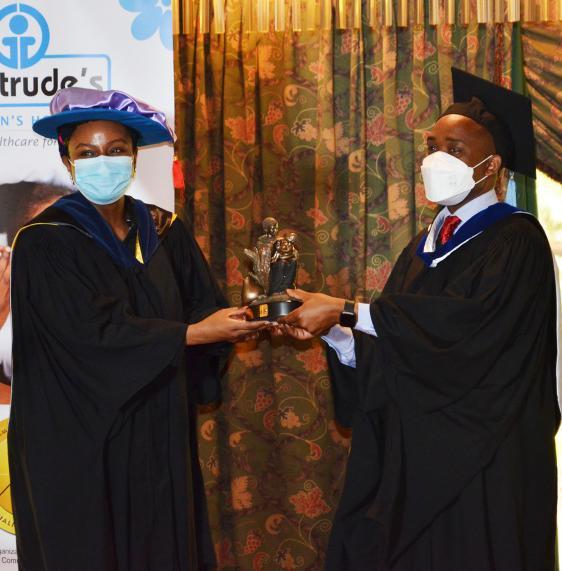
We wish the graduates all the best as they go out to apply all the knowledge and skills they gained at the institution.

...the Institute has enrolled 300 paediatric nurses and 224 paediatric Critical care nurses. 44% of these have been drawn from the public sector.
...we have trained nurses from Kenya, Rwanda, Zambia, Zimbabwe, Uganda, Nigeria and Congo.
“ ”Chief guest, Dr Mercy Mwangangi, Chief Administrative Secretary, Ministry of Health, receiving an appreciation gift from Gertrude’s Children’s Hospital CEO, Dr Robert Nyarango.
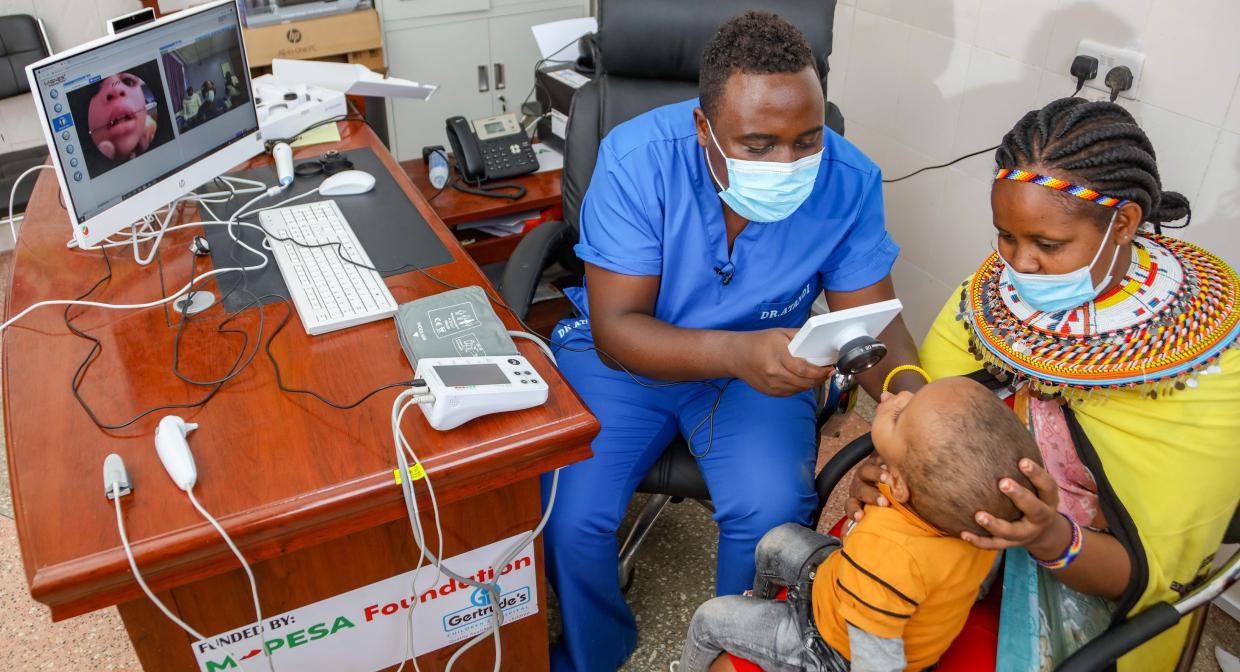
Gertrude’s Children’s Hospital, in partnership with M-PESA Foundation, Safaricom PLC, Gertrude’s Hospital Foundation and the County Governments of Samburu, Baringo, Lamu and Homabay, have partnered to improve access to quality specialist care to children in these counties by leveraging on the use of technology.
The introduction and use of Telemedicine is aimed at reducing the number of referrals of sick children and optimizing the capacity and reach of healthcare delivery systems by allowing level IV and V hospi tals have access to specialists. During the first phase, the project will provide free specialist care and treatment to 32,400 children in six counties. In addition, the telemedicine platform will be used to improve the capacity of 300 health workers to correctly diagnose and treat sick children, as well as correctly link children who require advanced/ specialized care.
Gertrude’s Hospital Foundation’s mission is to provide the best available healthcare services to needy and disadvantaged children in Kenya through the integration of care, research, education, and technology. This program aligns with our mission to leverage technology and innovative approaches to effectively diagnose and treat needy children
irrespective of their geographical location in the country.
The telemedicine platform is a Health Presence Communication Equipment which comprises of electronic medical devices such as the electronic stethoscope, vital signs monitor, dermascope camera, ultrasound machine, otoscope, and ECG (electrocardiogram). Different from the convention al video conferencing, the telemedicine platform allows the health worker at the local partner health facilities to place the probes on the patient and the specialist at Gertrude’s Children’s Hospital can see the patient and hear the sounds real time without interpretation from the health worker at the local facility. The bandwidth requirement for the equip ment is low, ranging from 512Kbps to 2Mbps. This means that the platform can be installed in rural and underserved areas that do not have fibre connectivity.
Joan Lekalderu, a Samburu County resident, (R) and her son Emmanuel use Telemedicine consultation services provided by Pateti Kelvin Lengees, a doctor at Samburu County Referral Hospital, in consultation with a paediatric doctor from Gertrude's Children’s HospitalThe Gertrude’s TeleAfya program implemented telemedicine in Daadab Level IV Hospital in Garissa County, Sekenani Health Centre in Narok County, and the Gertrude’s Mombasa Clinic in Mombasa County. Between 2016 and 2017, the platform was used to attend to over 250 referral cases and train 90 community health workers in Sekenani and Daadab to help in patient follow up after clinic appointments. The referred cases mainly comprised of communicable diseases like pneumonia and tuberculosis, developmental disorders such as cerebral palsy, vitamin deficiency disorders such as rickets, allergic conditions such as asthma and non-communicable diseases such as diabetes and cancer.

setting have specialised resources at their disposal to assess patients, such as physical exam data, point-of-care testing, and complete access to current medical records.
When creating the telemedicine training program, it's crucial to break down the components of an in-person visit to understand what data is available to a physician in a traditional clinic and determine when and if that same information could be acquired in a virtual visit, piece by piece. When it comes to telemedicine, the major focus should be on patient safety rather than number of patients treated.
Telemedicine practical training has not been widely included into medical, nursing, or continuing education curriculum, resulting in provider confusion and doubt. Healthcare professionals are under pressure to offer high quality care while also considering patient expectations for outcomes and satisfaction metrics as they operate in a new care medium. It's not as straightforward as conducting a traditional office visit over the phone or through webcam to provide virtual care. Providers in a clinic
Existing clinical practice recommendations, as well as primary source data, must be reviewed and applied to the context of telemedicine. This assists clinicians in determining which patients, symptoms, and diseases are suitable for telemedicine and when patients should be referred for in-person evaluation. Of course, each patient is different and must be treated as such, but healthcare staff must never put a patient at risk by presuming they have enough data to make a diagnosis when they don't. Telemedicine connects rural and isolated places with healthcare professionals all over the world by opening up new communication channels, overcoming geographical barriers and seeking to counteract the 'brain drain' or flight of human capital. This may result in improved communication between health-care facilities, as well as cross-site and international collaboration and networking. Through distance learning and training, such cooperation can help healthcare providers in remote regions.
Telemedicine also allows for learning and professional development by allowing for the broadcast of general knowledge and the training of health-care professionals at a distance.


Every patient and family has a special story to tell. Ann Nyambura narrates to us how her son, Kian, underwent a successful heart surgery as the other two siblings sing and play with baby brother at their humble home in Huruma, Cassanova CDF, Nairobi. The agony of dealing with a sick child that cannot explain their condition was disturbing for Mama Kian. Kian was just 1 year and 6 months old.
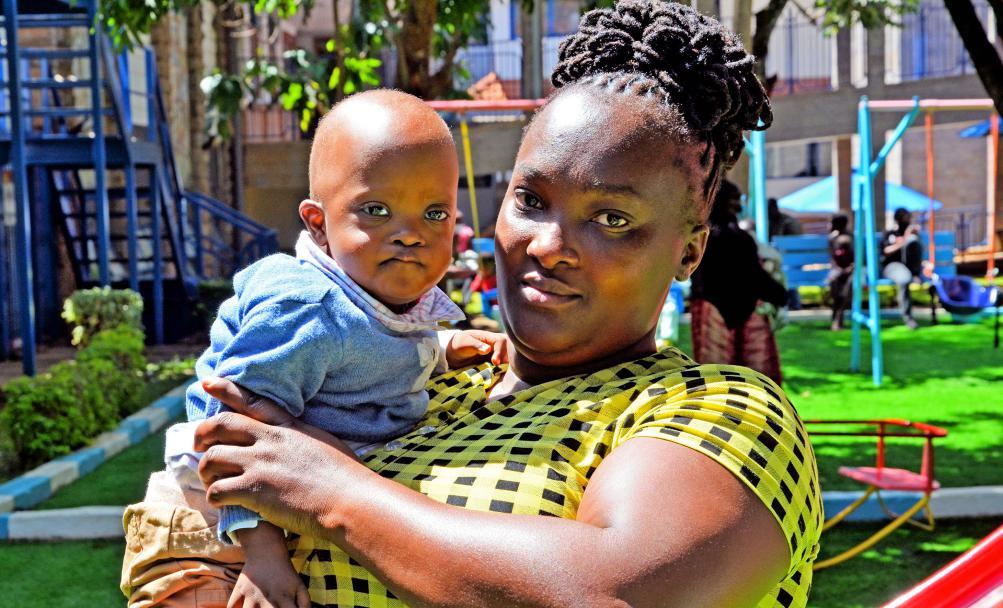
“When I gave birth to Kian, he was healthy, no medical complications. I didn’t have problems during his birth process. I have stayed with him, without him developing any health problems then I noticed many months were passing by and his development was slow. His neck did not develop well, it was loose and his legs were not strong enough to stand,” she said.
She realized there was a problem with her son. “That’s when I decided to go to the hospital. So, I went to Kiambu. He was examined and I was told it was about his calcium. While he was taking his medicine he got a flu, then we were told he needed an X-ray of the heart. When he did an ECHO, the doctor discovered Kian had a hole in his heart, it
was one hole,” said Mama Kian. After the medical discovery, the doctor recommended that Kian takes medicine for 3 months which was to start immediately.
“It was a very difficult time because that is the engine in a person’s life. I wondered where I would start. Where would I go? I began to imagine that my son would pass away. I did not see any possibility my son would be treated and get well. When you hear a child or anyone has a hole in their heart, one does not see any chance of survival because I had a sister-in-law who died with a similar condition. That’s what scared me the most, so we continued taking the prescribed medication.” she recounted.
Mama Kian continues, “Two of my friends called me to tell me that there was a free heart screening at Gertrude’s Children’s Hospital. I took it upon myself to go. Somehow, by good luck or bad luck, my son was discovered to have a high fever at the tent and was quickly taken in and given medicine to manage the high fever, and that’s how we became the first.”
Speaking to Dr Martin Mbiata on the medical case presented he stated that, “Kian was one of the beneficiaries of the program we were running with Rotary Club. Rotary Club, NHIF and Gift of Life, provided funds that we could intervene surgically for at least 20 patients. These were children who had been told they had cardiac lesions that were pending surgeries in different facilities because either it was not available or they couldn’t afford it at the time. All these kids came in and we screened those we could.”
“It was a bigger response than we were expecting but Kian was one of the lucky ones that we got to see. The process was medical examination where we went to image the heart. When the examination was done it was evident that Kian had a number of things going on. He had trisomy 21, which is a congenital syndrome in condition; it does predispose to cardiac lesions so 50% of these kids will have some form of cardiac lesions.” said Dr Mbiata.
“We saw Kian and clinically he did have signs of congenital heart disease and we performed an echocardiogram; which is an imaging of the heart where we do by ultrasound. So we found he had a ventricular septal defect; this is a hole in the heart, in the main pumping chambers so that blood keeps flowing from high pressure chamber to the low pressure chamber, so from the left to the right and back to the lungs. The lungs get a lot of blood flow. This was impairing him in a number of ways, this child was not growing well, he had persistent sweating, and he would get tired with very minimal activities. So there was an overlap between his congenital syndrome and the cardiac lesions both of which would make him not develop well,” Dr Mbiata explains.
Kian successfully went through the open heart surgical procedure that lasted for three hours.
“This is a plus and all that we expected from closing this hole. This hole was labouring his system and he was doing more than he needs to do just to do some small physical activities,” added Dr Mbiata.
“I want to say a big thank you to God, the doctors at Gertrude’s and to all the staff who attended to us very nicely. They were very professional and we left there knowing it’s like we left home. What made me happy is that all the surgeries that took place there were successful and there were no parents who complained. We were overjoyed and may God bless the team at Gertrude’s,” She said.
On the financial cover, mama Kian noted that, “surgery is not a joke, some people told me ‘Do you know the hospital you have gone to? You will be forced to sell land to pay.’ I told them if there is God, no land is going to be sold and God did His miracles. We were discharged from the hospital effortlessly and all the bills were cleared. Everything went on well and God did His work. There is no where we were held back at the hospital due to any debt owed to the hospital. What we only did from our side was to pay for the NHIF card, and make the monthly contributions,” she reckoned.
“From the time we left the hospital, there has been a big change. He plays well and he’s active. I haven’t experienced any issues with Kian since we left the hospital; it’s been a month and a half now,” she said.
“Kian is eating well, he is active without getting easily fatigued, his excessive sweating has come down and as you have seen, mum and baby are both happy,” says Dr Mbiata.
“If I meet someone with a similar condition like my son, I cannot refer him/her elsewhere; I will recommend them to Gertrude’s hospital. So on behalf of Kian, myself and my family, we are very thankful,” said Kian’s mum.
The greatest challenge for paediatric cardiology is still a lack of funding. As a result, more corporate entities are needed to collaborate with us and support the much-needed intervention to allow us to heal more children's hearts.
 From Left: Master Jayzan and his mother, Mama Kian, Kian and Kian’s sister in the hospital’s play area shortly after discharge from ICU following their successful open heart surgeries.
From Left: Master Jayzan and his mother, Mama Kian, Kian and Kian’s sister in the hospital’s play area shortly after discharge from ICU following their successful open heart surgeries.

